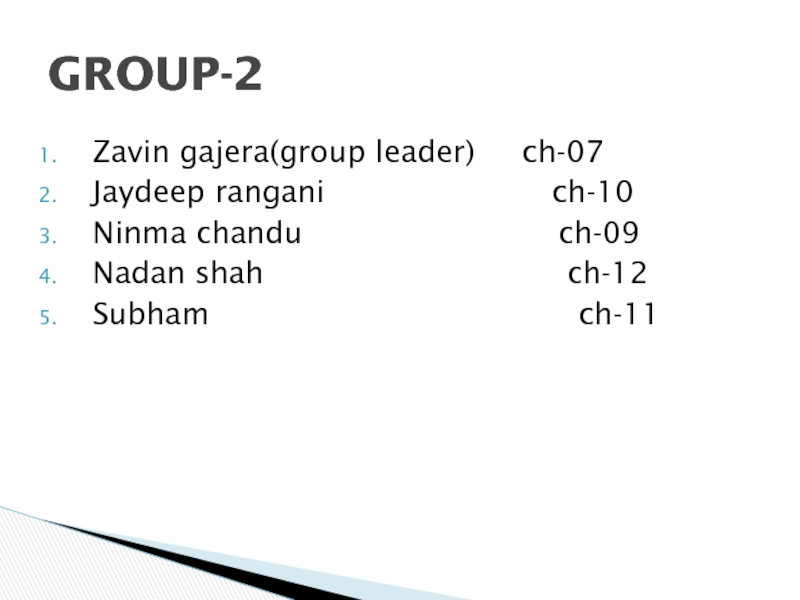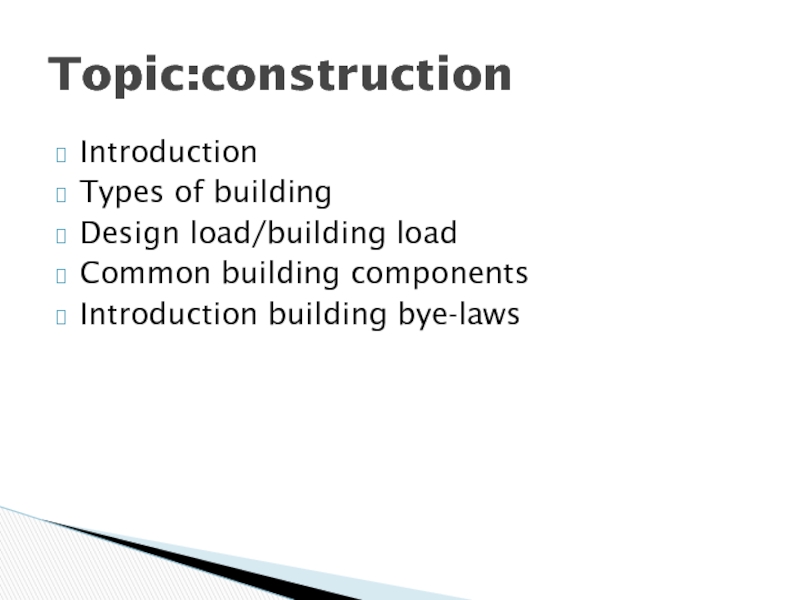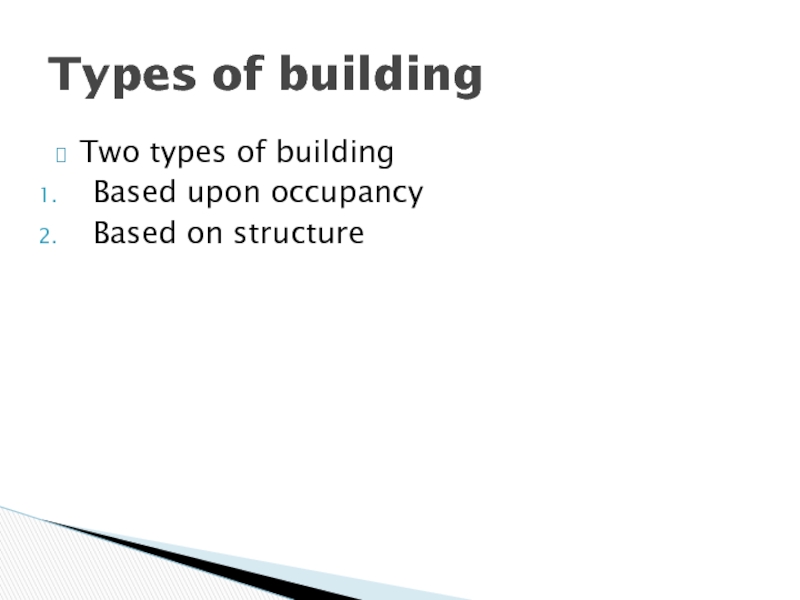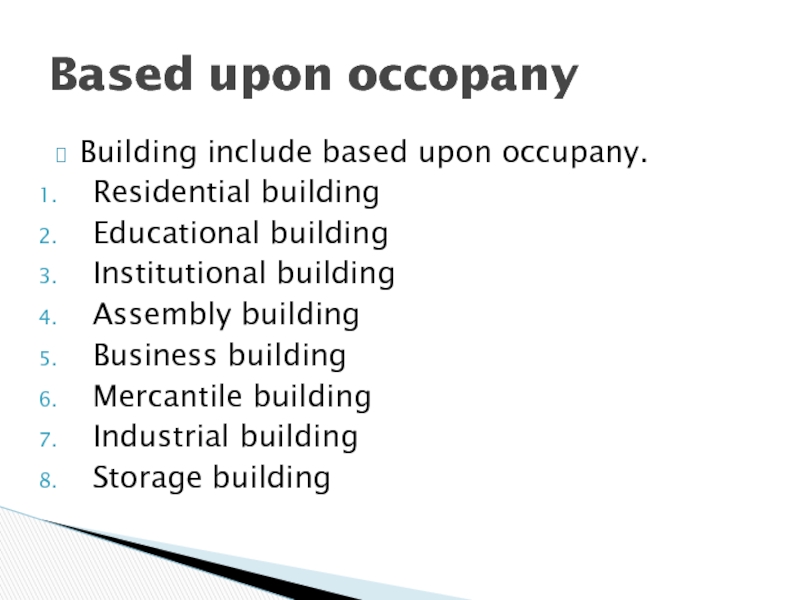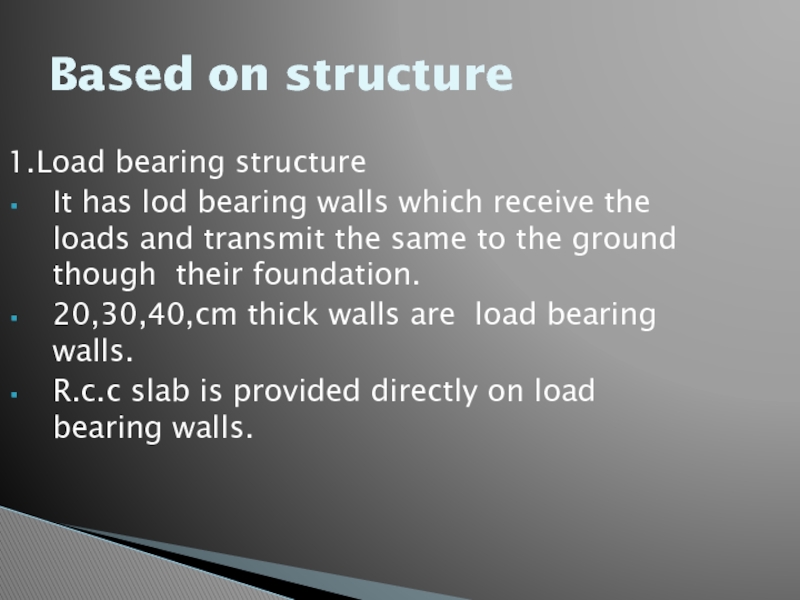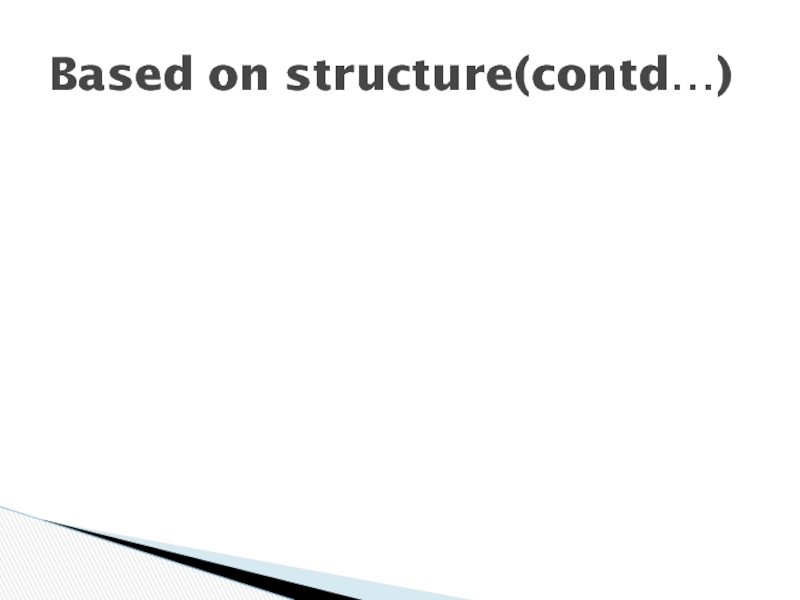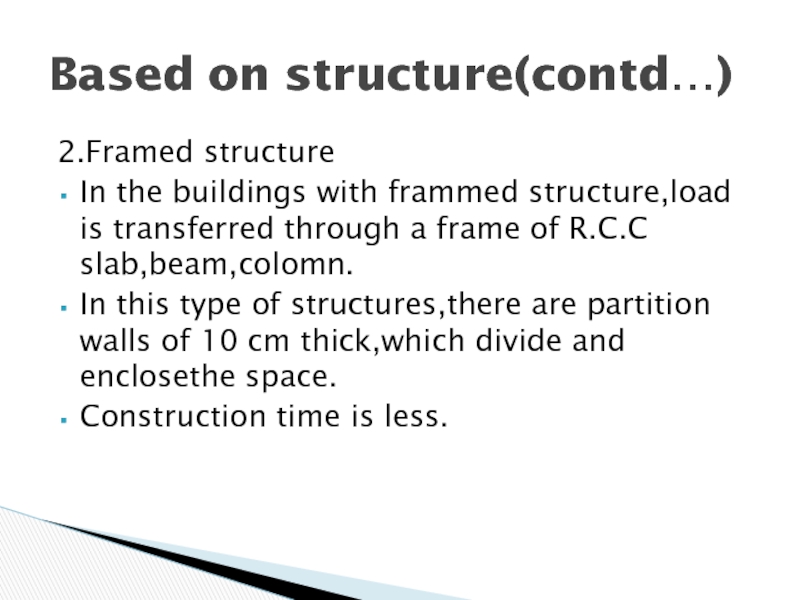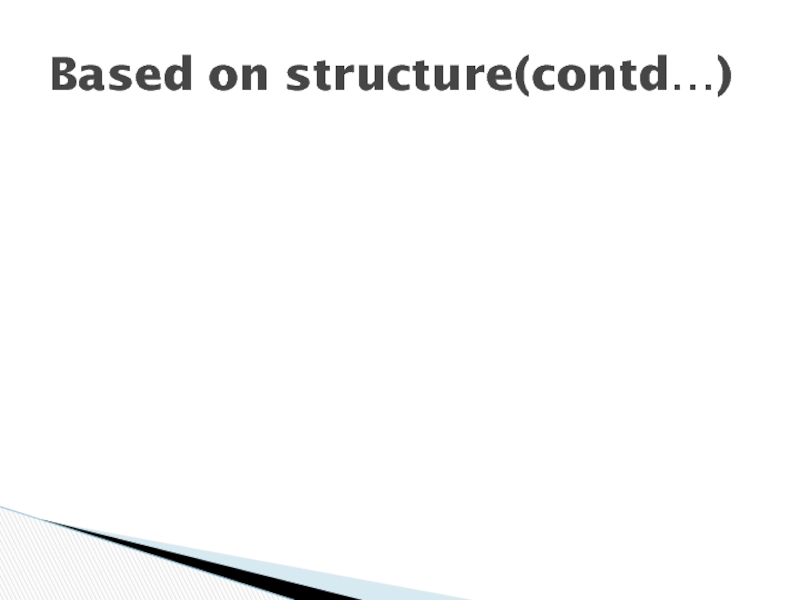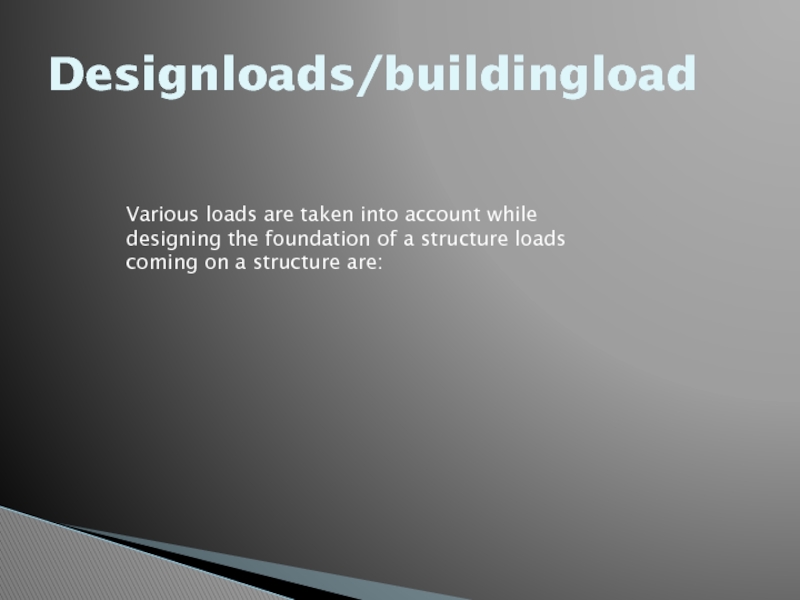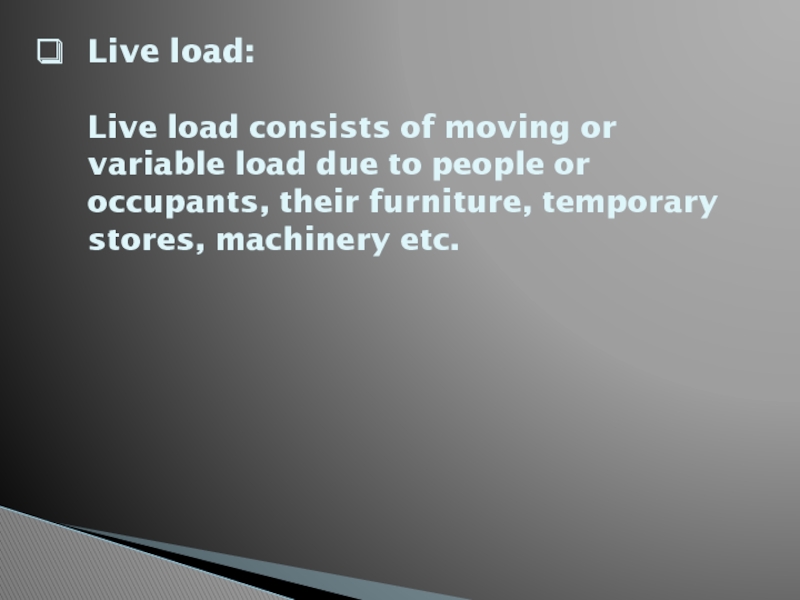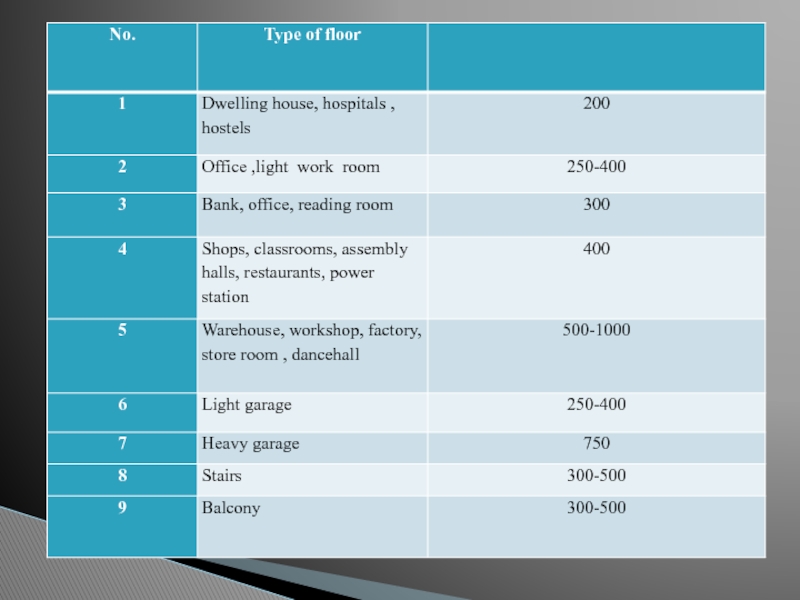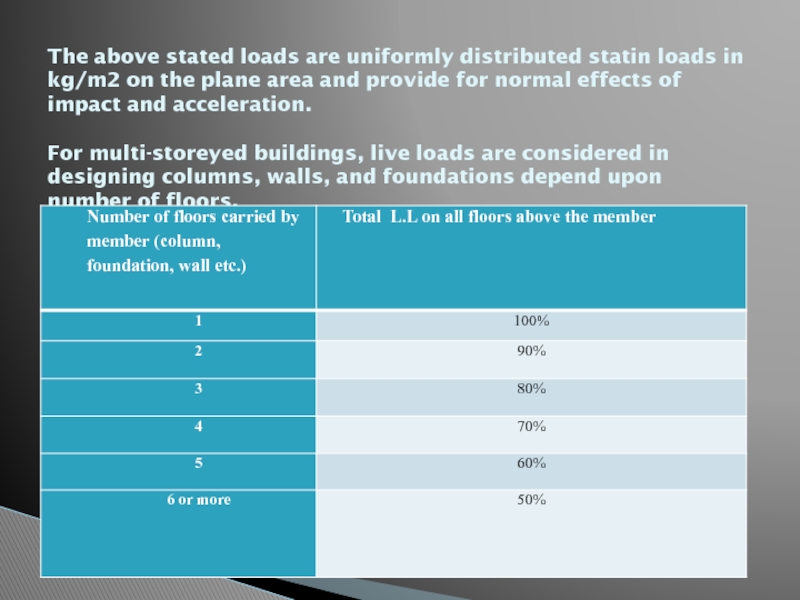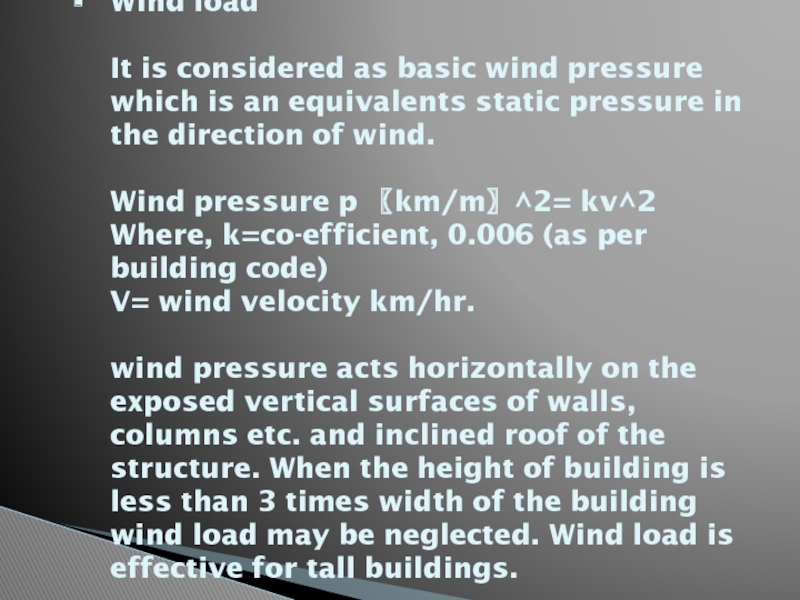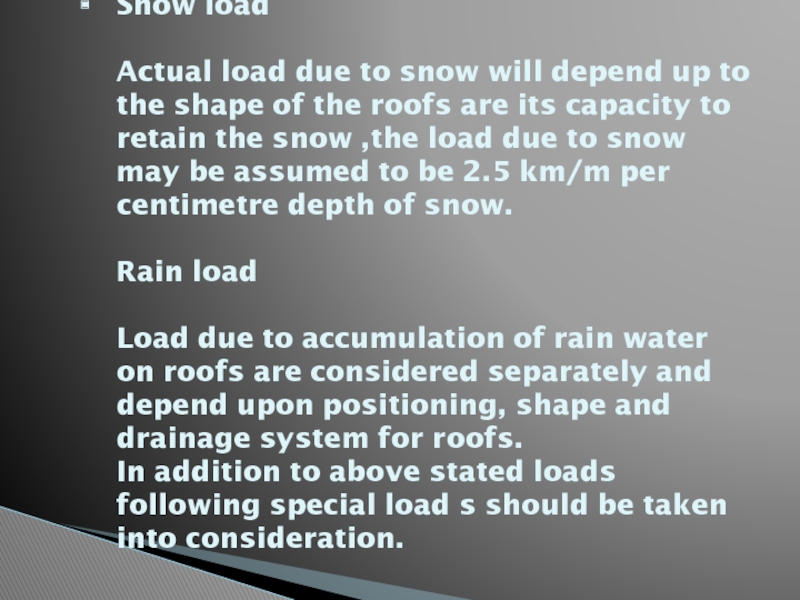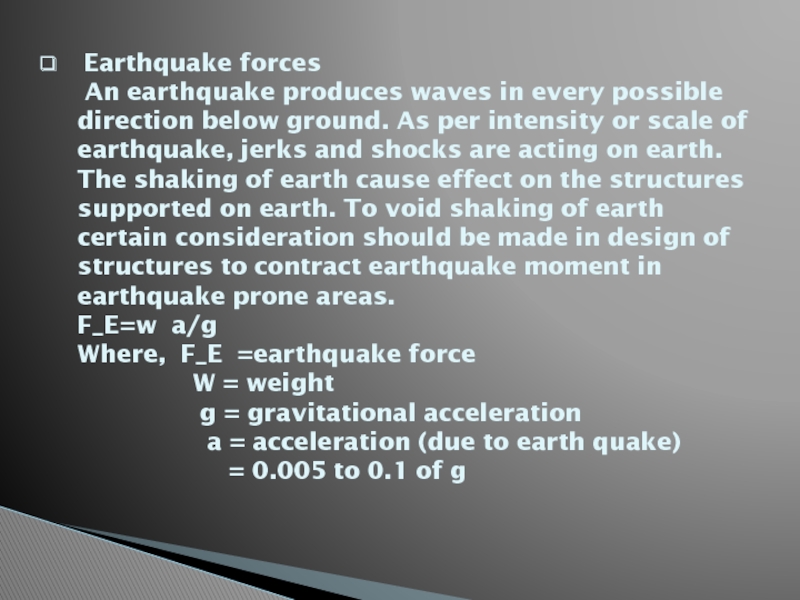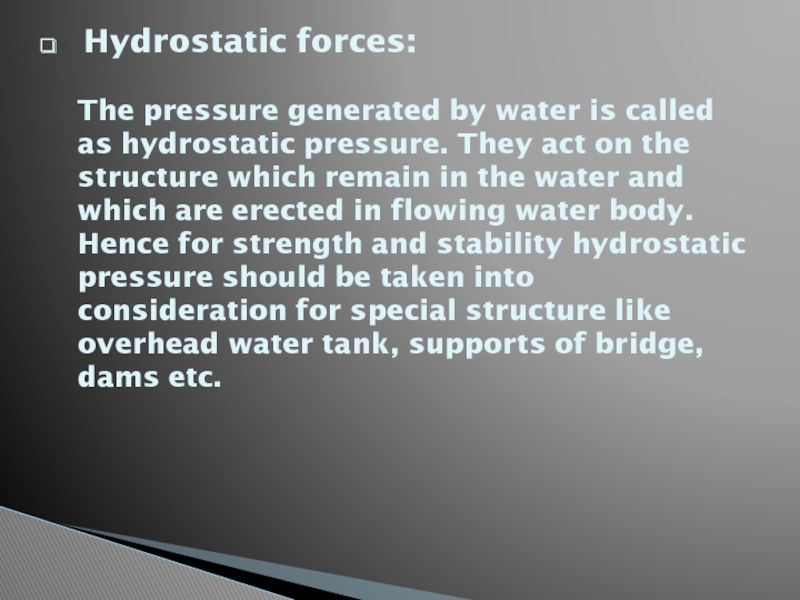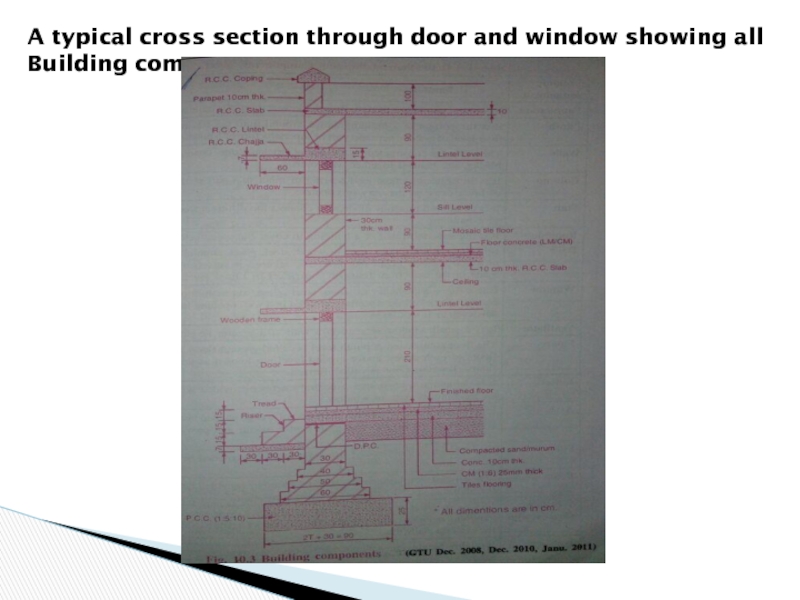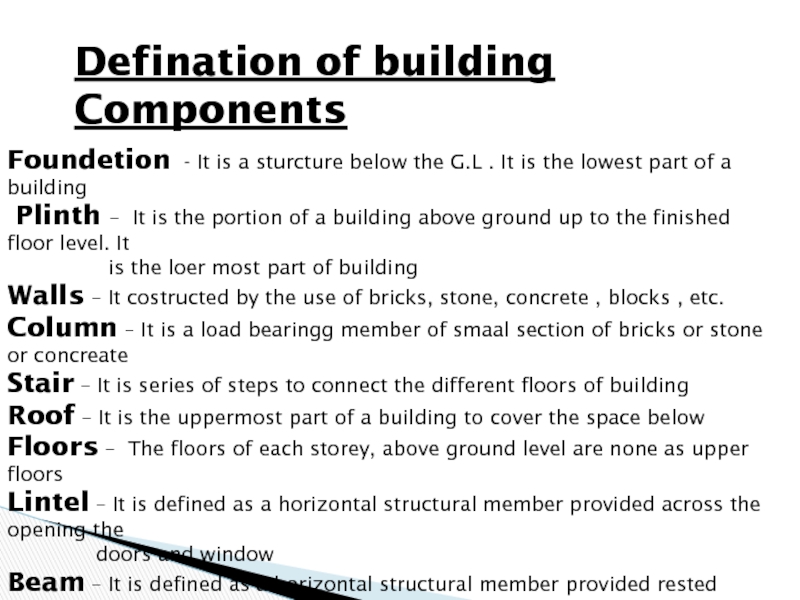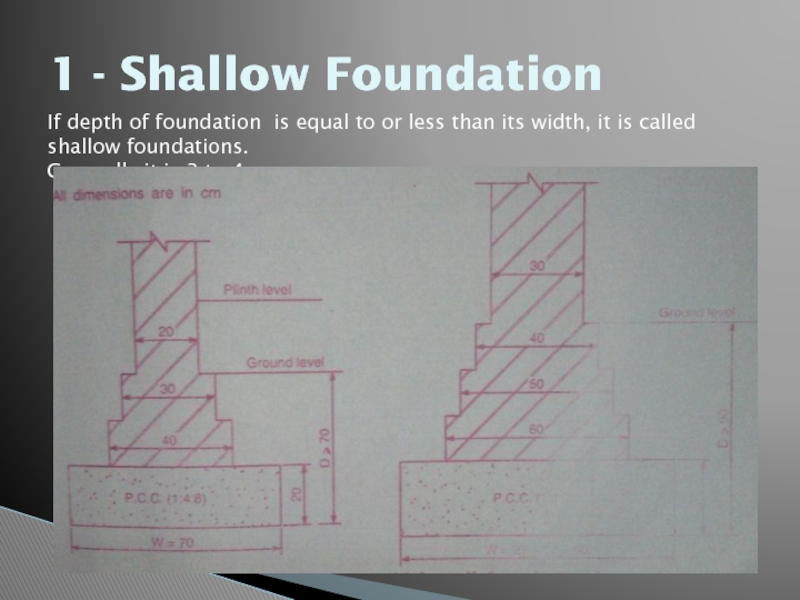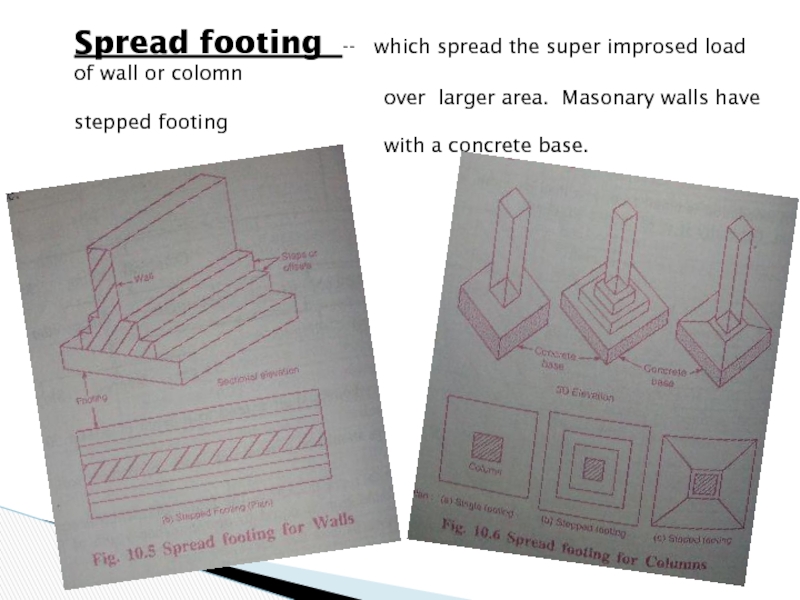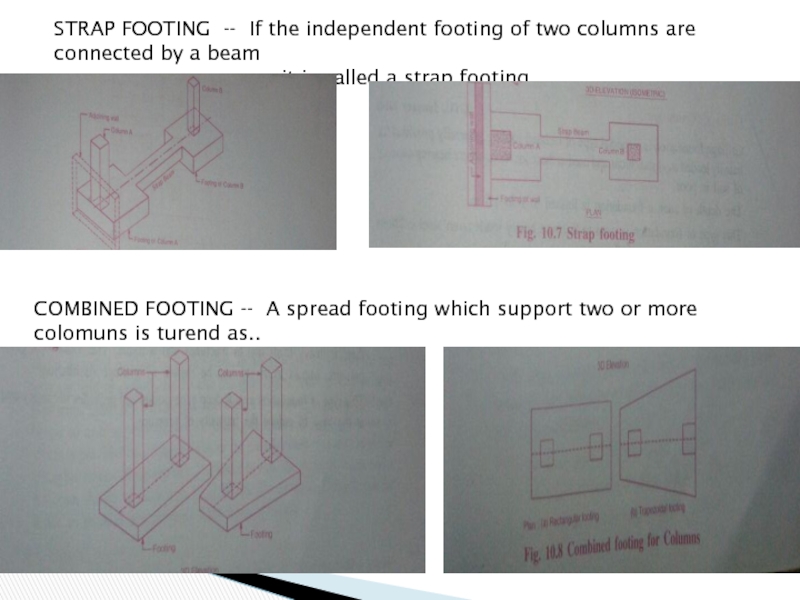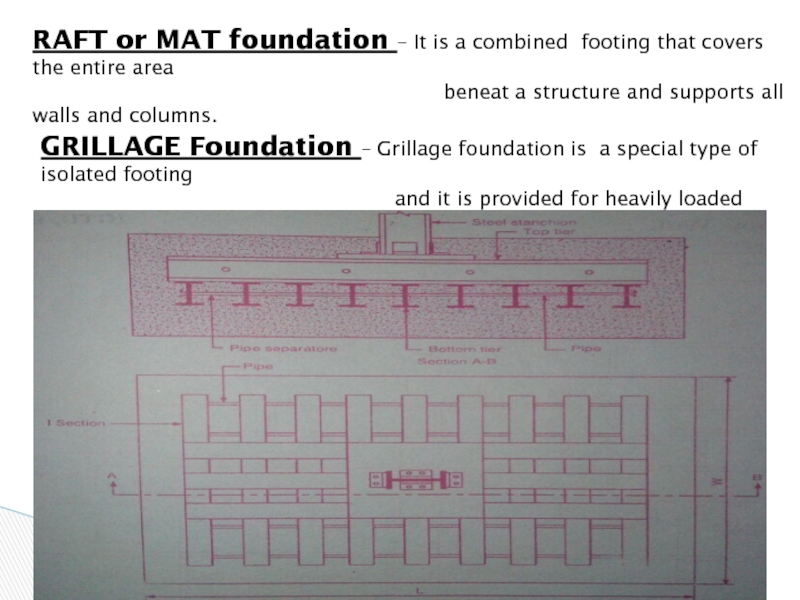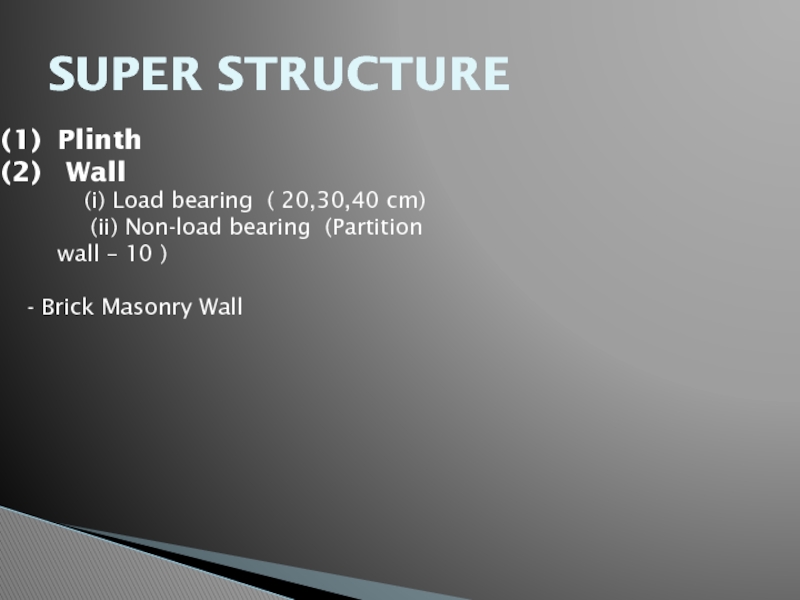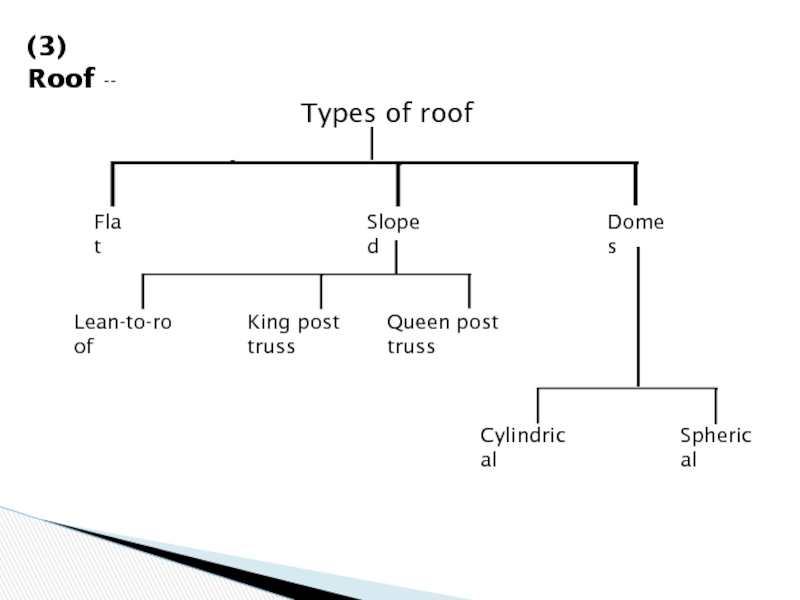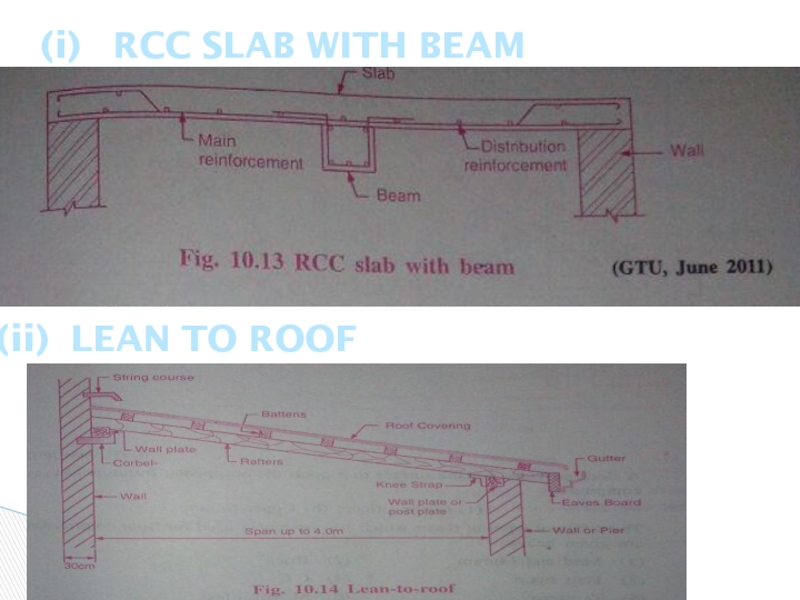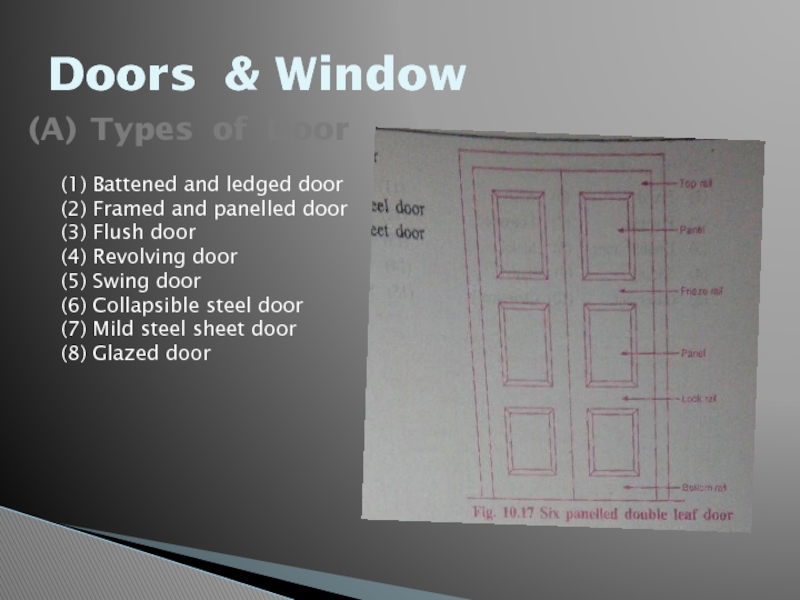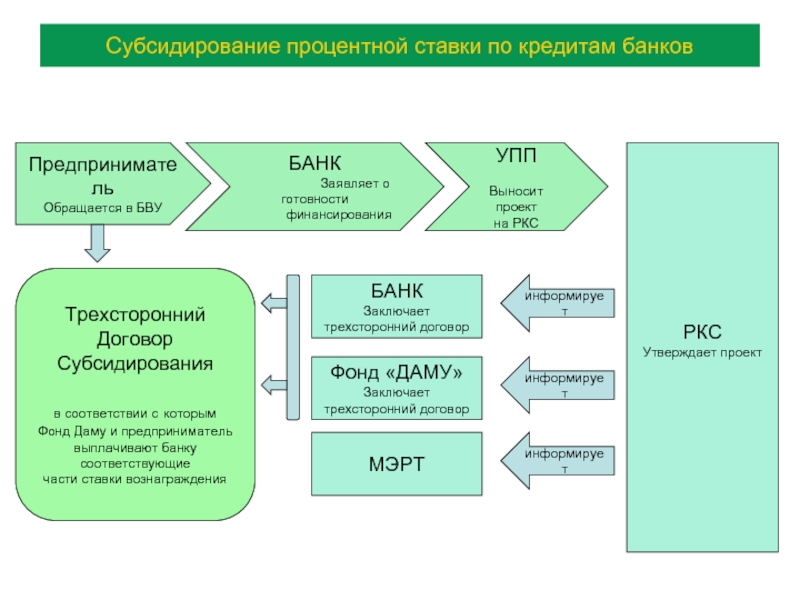- Главная
- Разное
- Дизайн
- Бизнес и предпринимательство
- Аналитика
- Образование
- Развлечения
- Красота и здоровье
- Финансы
- Государство
- Путешествия
- Спорт
- Недвижимость
- Армия
- Графика
- Культурология
- Еда и кулинария
- Лингвистика
- Английский язык
- Астрономия
- Алгебра
- Биология
- География
- Детские презентации
- Информатика
- История
- Литература
- Маркетинг
- Математика
- Медицина
- Менеджмент
- Музыка
- МХК
- Немецкий язык
- ОБЖ
- Обществознание
- Окружающий мир
- Педагогика
- Русский язык
- Технология
- Физика
- Философия
- Химия
- Шаблоны, картинки для презентаций
- Экология
- Экономика
- Юриспруденция
Based upon occopany презентация
Содержание
- 1. Based upon occopany
- 2. Zavin gajera(group leader) ch-07 Jaydeep
- 3. Introduction Types of building Design load/building load Common building components Introduction building bye-laws Topic:construction
- 4. Two types of building Based upon occupancy
- 5. Building include based upon occupany. Residential building
- 6. Based on structure 1.Load bearing structure It
- 7. Based on structure(contd…)
- 8. 2.Framed structure In the buildings with frammed
- 9. Based on structure(contd…)
- 10. Designloads/buildingload Various loads are taken
- 11. Live load: Live load consists of
- 13. The above stated loads are uniformly distributed
- 14. Dead lode Dead lode comprises of the
- 15. Wind load It is considered as
- 16. Snow load Actual load due to
- 17. Earthquake forces An earthquake produces
- 18. Hydrostatic forces: The pressure generated
- 19. Basic building components SUPER STURCTURE Plinth
- 20. A typical cross section through door and window showing all Building components
- 21. Foundetion - It is a sturcture below
- 22. Types of Foundation Shallow
- 23. 1 - Shallow Foundation If depth of
- 24. Spread footing -- which spread the
- 25. STRAP FOOTING -- If the independent footing
- 26. RAFT or MAT foundation – It is
- 27. SUPER STRUCTURE Plinth Wall
- 28. (3) Roof -- Types of roof Flat
- 29. (i) RCC SLAB WITH BEAM (ii) LEAN TO ROOF
- 30. FLOOR -- A floor provides
- 31. Doors & Window Types of Door
Слайд 2Zavin gajera(group leader) ch-07
Jaydeep rangani
Ninma chandu ch-09
Nadan shah ch-12
Subham ch-11
GROUP-2
Слайд 3Introduction
Types of building
Design load/building load
Common building components
Introduction building bye-laws
Topic:construction
Слайд 5Building include based upon occupany.
Residential building
Educational building
Institutional building
Assembly building
Business building
Mercantile building
Industrial
Storage building
Based upon occopany
Слайд 6Based on structure
1.Load bearing structure
It has lod bearing walls which receive
20,30,40,cm thick walls are load bearing walls.
R.c.c slab is provided directly on load bearing walls.
Слайд 82.Framed structure
In the buildings with frammed structure,load is transferred through a
In this type of structures,there are partition walls of 10 cm thick,which divide and enclosethe space.
Construction time is less.
Based on structure(contd…)
Слайд 10Designloads/buildingload
Various loads are taken into account while designing the foundation of
Слайд 11Live load: Live load consists of moving or variable load due to
Слайд 13The above stated loads are uniformly distributed statin loads in kg/m2
Слайд 14Dead lode Dead lode comprises of the weight of all walls, partitions,
Слайд 15Wind load It is considered as basic wind pressure which is an
Слайд 16Snow load Actual load due to snow will depend up to the
Слайд 17 Earthquake forces An earthquake produces waves in every possible direction
Слайд 18 Hydrostatic forces: The pressure generated by water is called as hydrostatic
Слайд 19Basic building components
SUPER STURCTURE
Plinth
D.P.C
Walls and colums
Floors
Beams
Roofs and slabs
Lintels and Aechers
Doors and
Chajjas
Parapet
Steps and Stairs
Cupboard and Shelves
Substructer
Foundation
Слайд 21Foundetion - It is a sturcture below the G.L . It
Plinth – It is the portion of a building above ground up to the finished floor level. It
is the loer most part of building
Walls – It costructed by the use of bricks, stone, concrete , blocks , etc.
Column – It is a load bearingg member of smaal section of bricks or stone or concreate
Stair – It is series of steps to connect the different floors of building
Roof – It is the uppermost part of a building to cover the space below
Floors – The floors of each storey, above ground level are none as upper floors
Lintel – It is defined as a horizontal structural member provided across the opening the
doors and window
Beam – It is defined as a horizontal structural member provided rested above wals and
columns
Chajja – It is a small slab provided at a lintel above doors , window
Parapet – It is a low height , thin walls provided above slab
Defination of building Components
Слайд 22Types of Foundation
Shallow
Deep
Pile
Pier
Well or Cassions
Spread footing
Strap footing
Combind footing
Mat footing
For walls
for columns
Rectangular
Trapezodial
Simple
Stepped
Grillage
Single
Stepped
Sloped
Слайд 231 - Shallow Foundation
If depth of foundation is equal to or
Generally it is 3 to 4 m.
Слайд 24Spread footing -- which spread the super improsed load of
over larger area. Masonary walls have stepped footing
with a concrete base.
Слайд 25STRAP FOOTING -- If the independent footing of two columns are
it is called a strap footing.
COMBINED FOOTING -- A spread footing which support two or more colomuns is turend as..
Слайд 26RAFT or MAT foundation – It is a combined footing that
beneat a structure and supports all walls and columns.
GRILLAGE Foundation – Grillage foundation is a special type of isolated footing
and it is provided for heavily loaded steel stanchions
-The depth of foundation is 1 to 1.5m
Слайд 27SUPER STRUCTURE
Plinth
Wall
(i) Load bearing (
(ii) Non-load bearing (Partition wall – 10 )
- Brick Masonry Wall
Слайд 28(3) Roof --
Types of roof
Flat
Sloped
Domes
Lean-to-roof
King post truss
Queen post truss
Cylindrical
Spherical
Слайд 30FLOOR -- A floor provides a plane surface to
and any equipment.
TYPES OF FLOOR
(1) Ground floors
(2) Upper floors
The different types of floor which are commonly used for floor constuction is
Mud and Muram (9) Brick
Flag stone (10) C.C
Terrazzo (11)Marble
Tiles (12)Asphalt
Timber (13)Glass
Rubber (14)Granite
Cor (15)Mosaic tiles
Plastic or PVC
Слайд 31Doors & Window
Types of Door
(1) Battened and ledged door
(2) Framed and
(3) Flush door
(4) Revolving door
(5) Swing door
(6) Collapsible steel door
(7) Mild steel sheet door
(8) Glazed door

